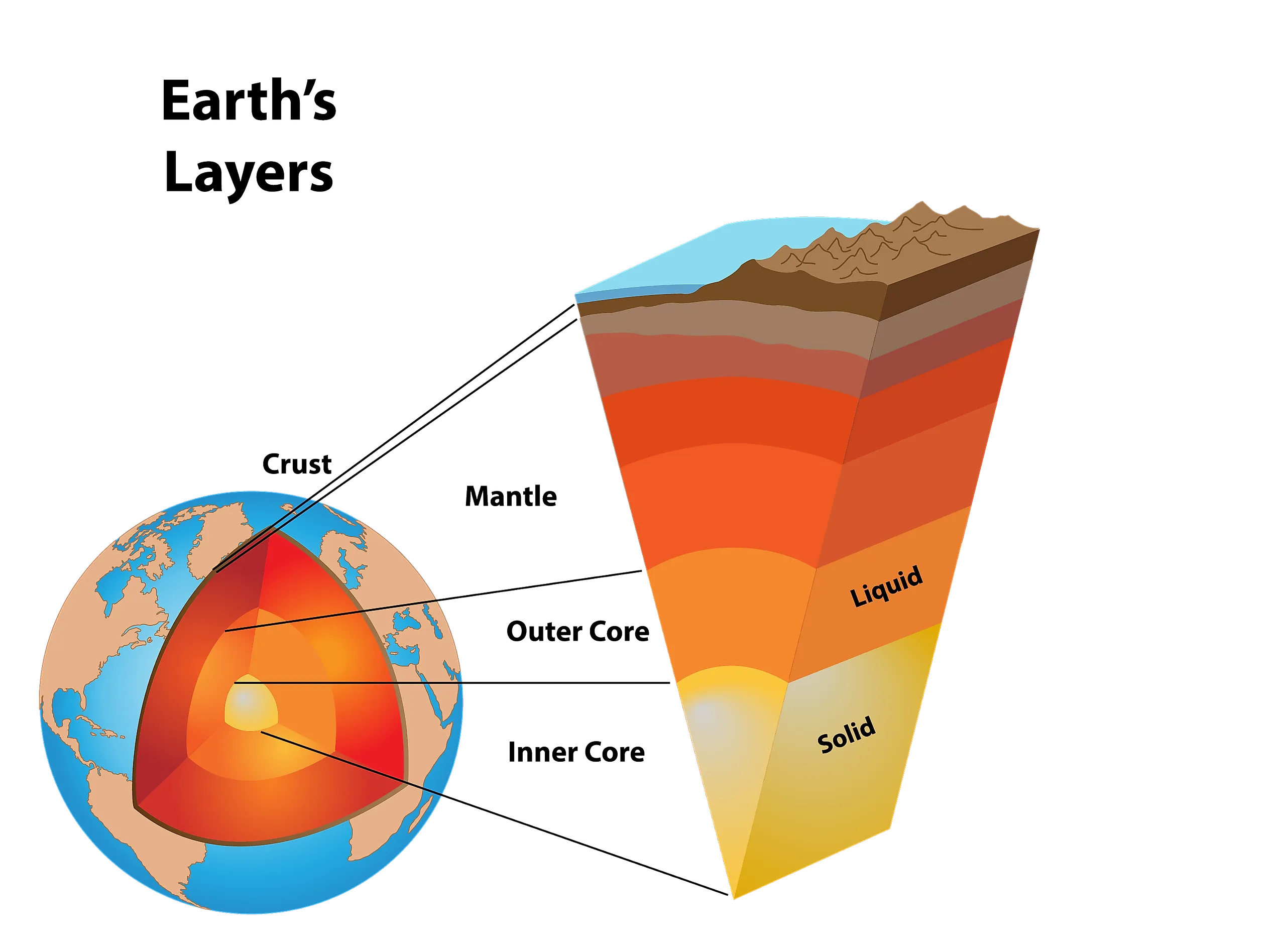
What Are The Layers Of The Earth? WorldAtlas
Other references may refer to the layers recognized on the basis of response to stress as "mechanical layers." Animated diagram of the layers of the earth for teachers and students.

Layers of the Earth animated diagram
Geological cross section of Earth, showing its internal structure, the atmosphere and hydrosphere. The internal structure of Earth is the layers of the Earth, excluding its atmosphere and hydrosphere. The structure consists of an outer silicate solid crust, a highly viscous asthenosphere and solid mantle, a liquid outer core whose flow.
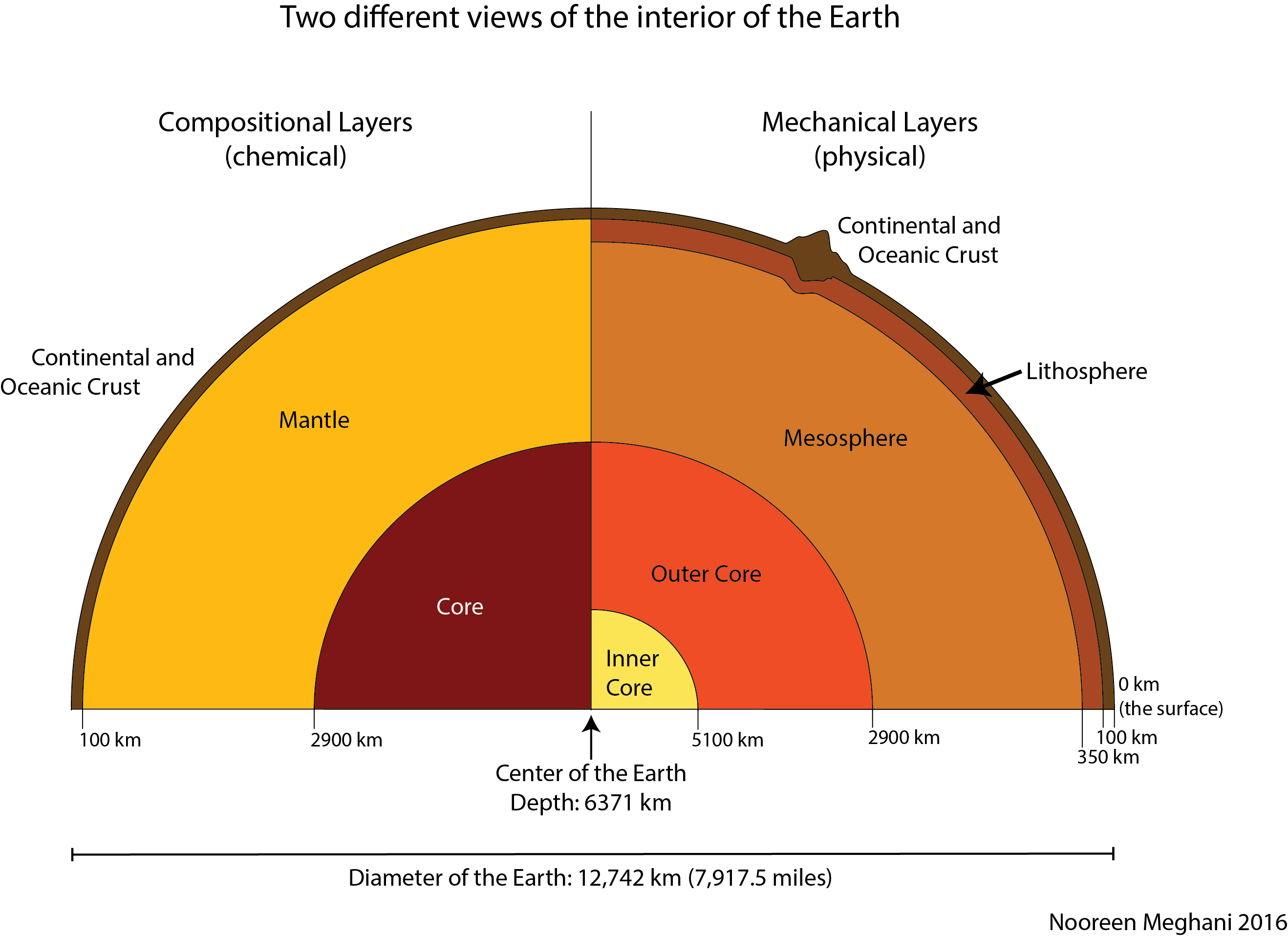
The Structure of the Earth Marcellus Community Science
In general, the Earth can be divided into layers based on chemical composition and physical characteristics. Figure 2.2.1 2.2. 1: The layers of the Earth. Physical layers include the lithosphere and asthenosphere; chemical layers are crust, mantle, and core.
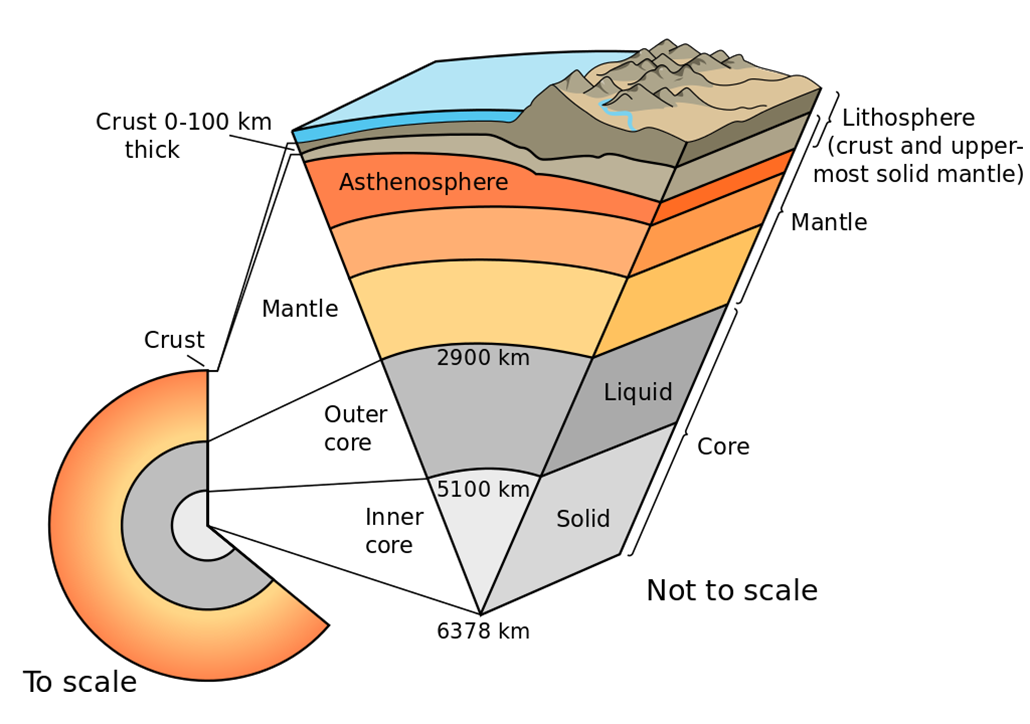
Explainer Earth — layer by layer Science News for Students
Interior of the Earth. The crust, the mantle, and the core are the three layers that make up the earth. The core only forms 15 per cent of the Earth's volume, whereas the mantle occupies 84 per cent. The remaining 1 per cent is made up of the crust. From the picture, we see that at the centre of the Earth lies the core, then there is the.
/internal-structure-of-the-earthwith-english-labels--3d-illustration-523049135-5aa73e09ff1b780036f1c711-5bb78d5c46e0fb0026d10eef.jpg)
Which Layers Make Up The Lithosphere Of Earth Mugeek Vidalondon
The physical layers match in line with the chemical layers, albeit with a little more detail. For example, there are two parts of the core, mantle, and crust. These parts have different physical traits and compositions. 1. Crust. Earth's crust. The earth's crust is the planet's outermost layer. It contains all biological life as yet known.
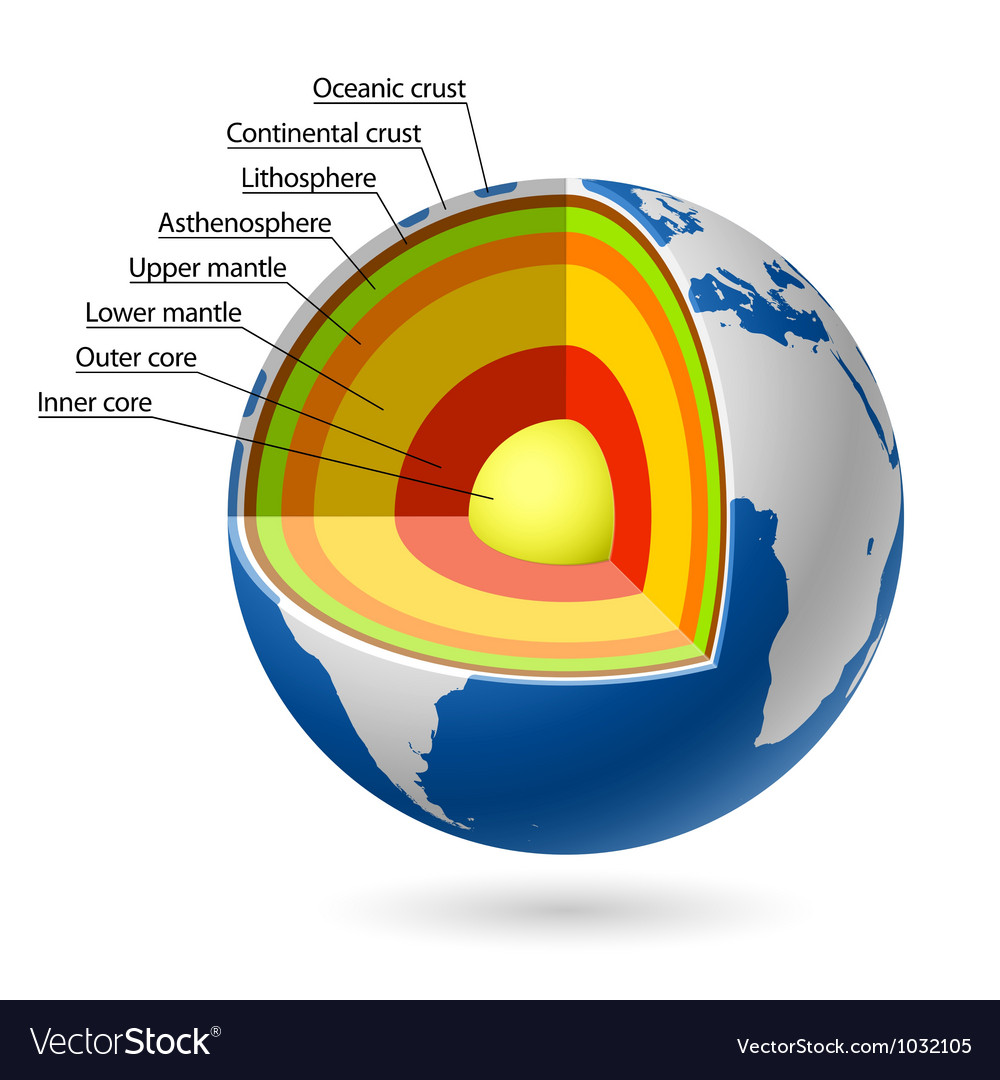
Which Layers Make Up The Lithosphere Of Earth Mugeek Vidalondon
Table of Contents Chapter 1 Temperatures and Composition 3-6 Chapter 2 The Layers 7-13 Chapter 3 Folklore: Hollow Earth 13-15 Glossary 16-18 Works Referenced 19 2

Earth's interior Layers of the earth Geography4u read geography
All the Earth's Layers, Their Structure and Composition. 1. Crust. Temperature: 475 K (∼200°C) at the surface to 1300 K (∼1000°C) Thickness: 25 miles (32 km) for continental crust and 3-5 miles (8 km) for oceanic crust. Density: ∼ 2830 kg/m 3 at the continental crust and ∼ 3000 kg/m 3 at the oceanic crust. It is the outermost and.

How to make the Earth Internal Structure Of earth Earth texture
The Earth's interior is composed of four layers, three solid and one liquid—not magma but molten metal, nearly as hot as the surface of the sun. The deepest layer is a solid iron ball, about.
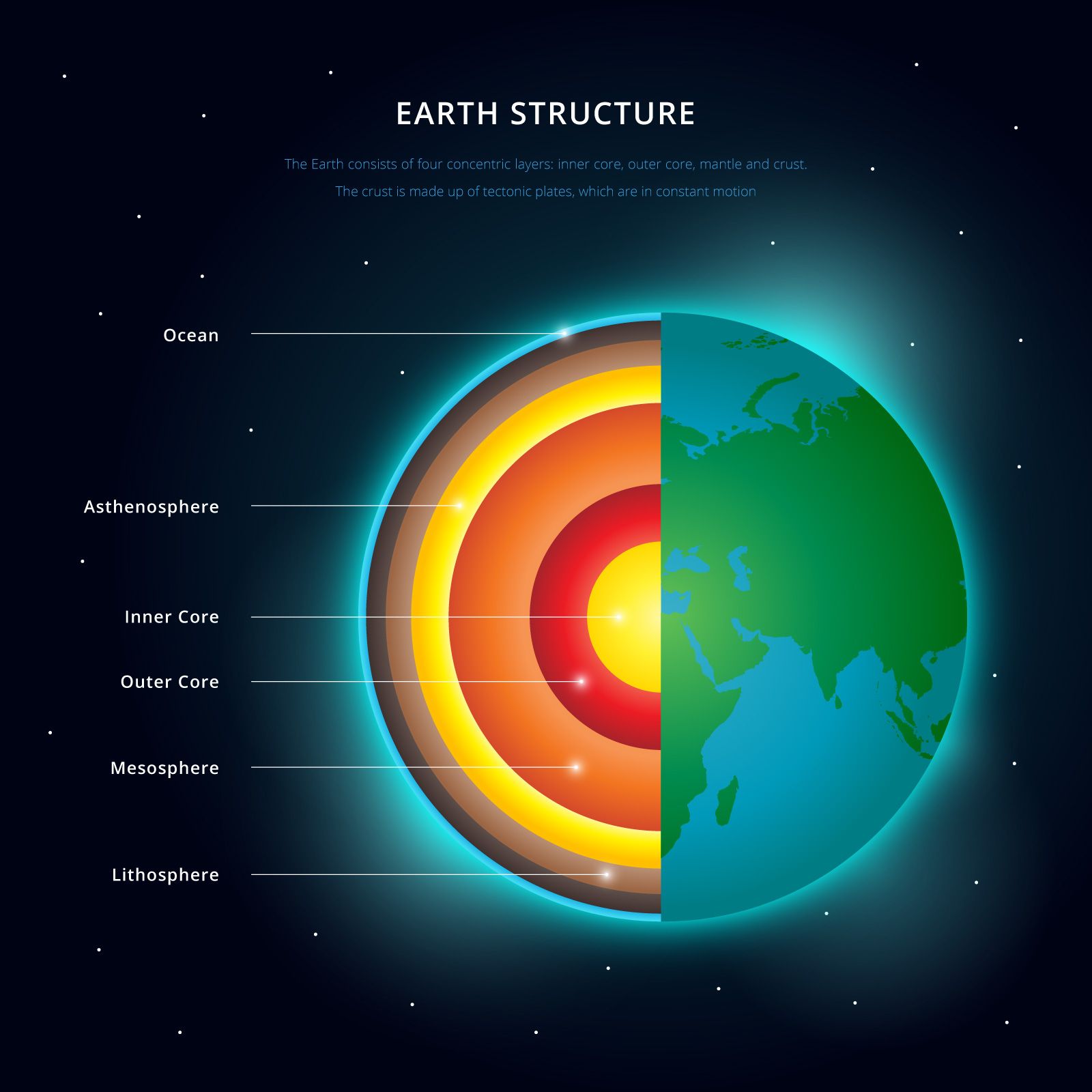
Layer Free Vector Art (1097 Free Downloads)
Starting at the center, Earth is composed of four distinct layers. They are, from deepest to shallowest, the inner core, the outer core, the mantle and the crust. Except for the crust, no one has ever explored these layers in person. In fact, the deepest humans have ever drilled is just over 12 kilometers (7.6 miles).

Earth's Layers Diagram & Worksheets Teaching Resources
How Many Layers Does the Earth Have. The Earth has 4 layers. Crust - We live on this part. Mantle - Mostly solid rock but parts are hotter and more fluid. Outer Core - Made up of liquid metal and rock. Inner Core - Solid Rock made up of iron and nickel. Its radius is around 6371 km or 1,800 miles.
/internal-structure-of-the-earthwith-english-labels--3d-illustration-523049135-5aa73e09ff1b780036f1c711-5bb78d5c46e0fb0026d10eef.jpg)
6 Fascinating Facts About the Earth's Mantle
View in 3D. The core is the hottest and innermost layer of the Earth, made up of iron and other metals. The core is divided into a solid inner core and a liquid outer core. The outer core is around 2200 km thick, and the inner core is 1,230 to 1,530 km thick. All three layers of the Earth are easily distinguishable in layers of the Earth 3D model.

inside earth (lesson 0075) TQA explorer
Label the OUTER LAYERS of the Earth This is a cross section of only the upper layers of the Earth's surface. Read the definitions below and use

Which diagram correctly labels the four layers of the Earth?
The four main layers of the Earth are the crust, mantle, outer core, and inner core. The Earth, like an onion, consists of several concentric layers, each with its own unique set of properties and characteristics. The four primary layers are the crust, the mantle, the outer core, and the inner core. However, geologists subdivide these layers.
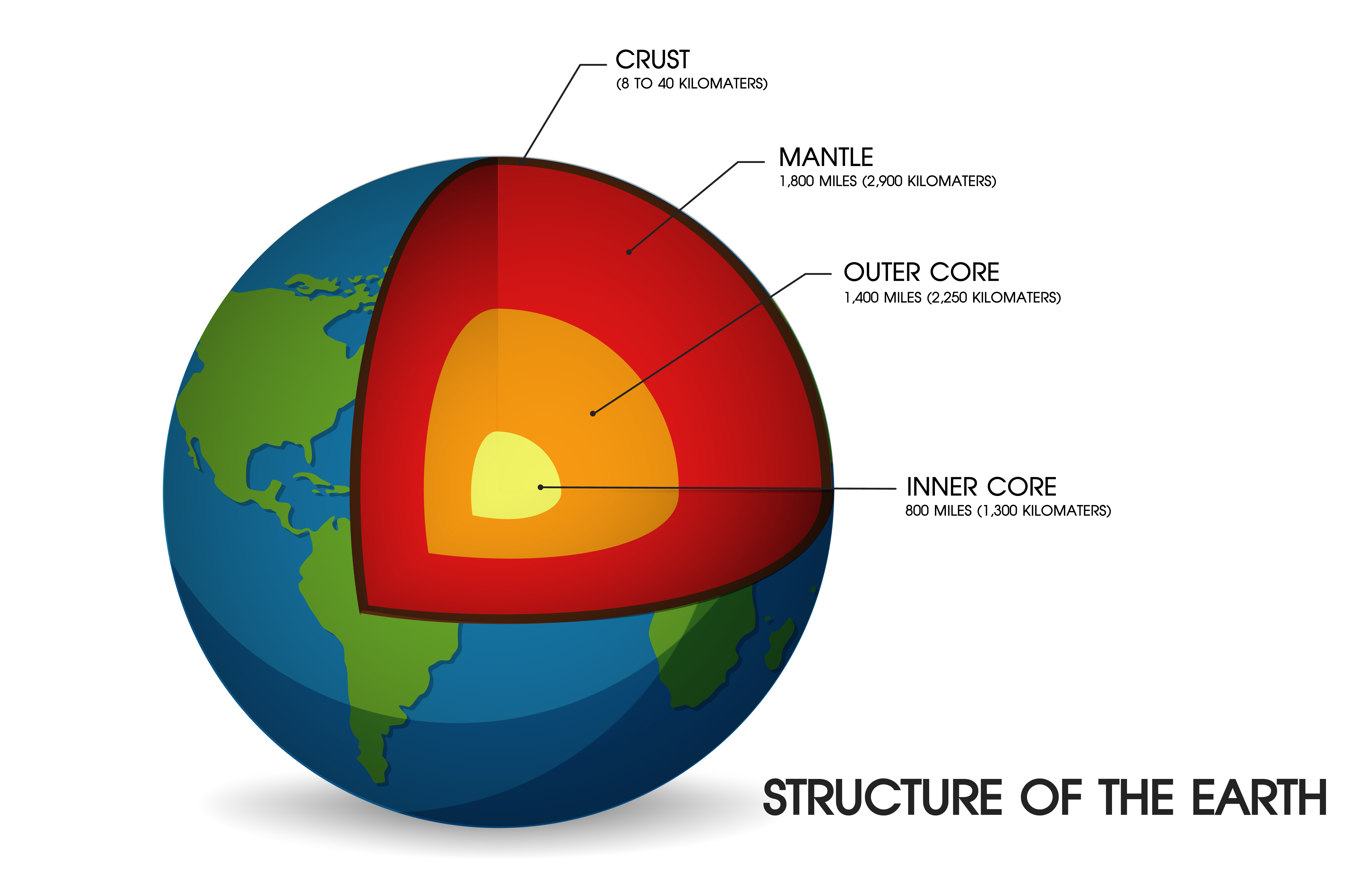
Structure of the Earth. 593838 Vector Art at Vecteezy
Grades. 5 - 12. The structure of the earth is divided into four major components: the crust, the mantle, the outer core, and the inner core. Each layer has a unique chemical composition, physical state, and can impact life on Earth's surface. Movement in the mantle caused by variations in heat from the core, cause the plates to shift, which can.
Mr. Villa's Science Stars! Videos and Pictures of Earth's spheres and
The thermosphere starts just above the mesosphere and extends to 600 kilometers (372 miles) high. Aurora and satellites occur in this layer. Ionosphere. The ionosphere is an abundant layer of electrons and ionized atoms and molecules that stretches from about 48 kilometers (30 miles) above the surface to the edge of space at about 965 km (600.

Living LIGO Lessons From My Childhood on How to Teach
The Earth can be divided into four layers - crust, mantle, outer core, and inner core. The earth is split into four major layers: the crust, the mantle, the outer core and the inner core. The crust is what humans live on, and it consists of only one percent of the Earth's mass. The centre of the Earth is a solid ball of nickel and iron roughly.